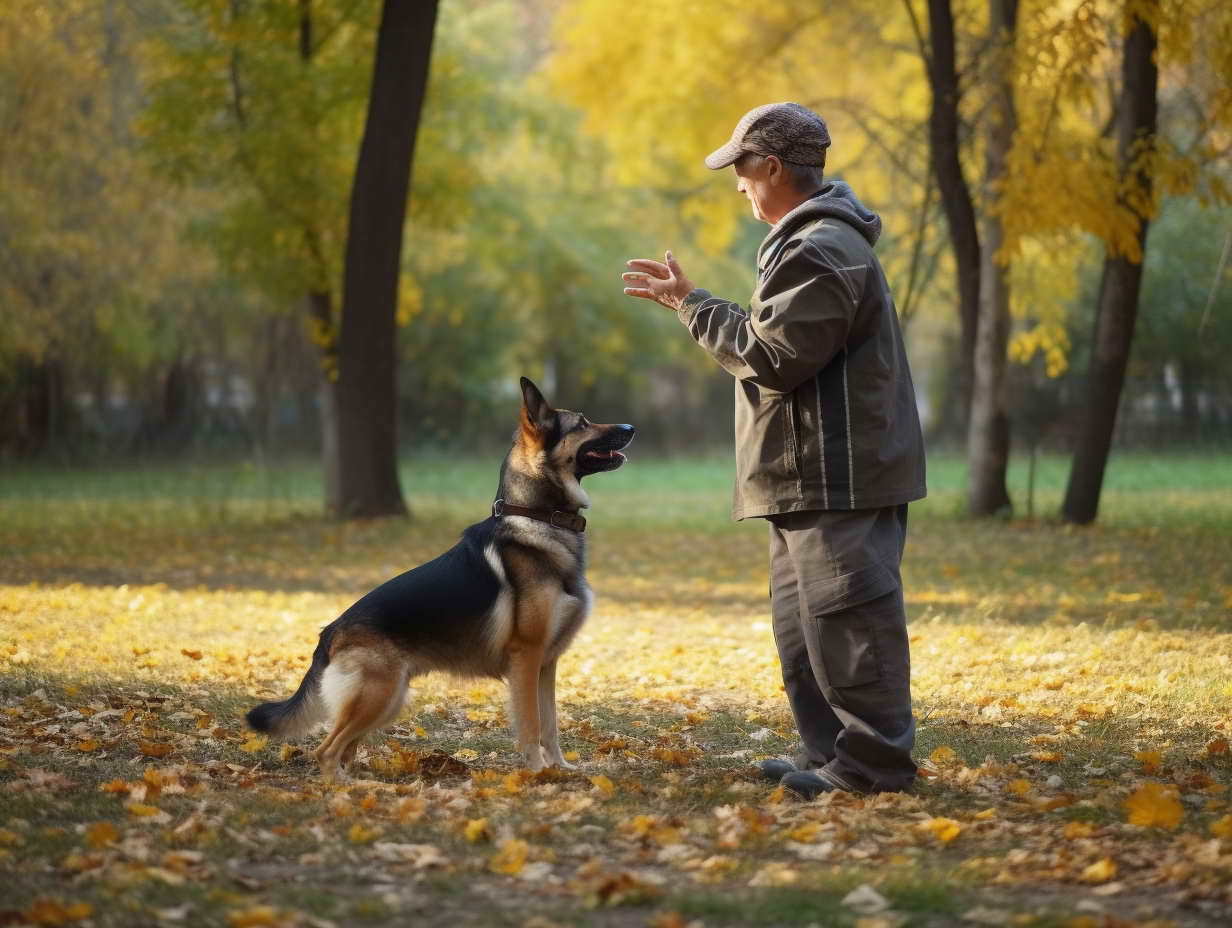Dog Training For Hospitals: Ensuring a Safe and Welcoming Environment
In the fast-paced environment of a hospital, where compassionate care and efficient operations are paramount, ensuring a welcoming and secure atmosphere is of utmost importance. One innovative approach that has gained traction is “Dog Training for Hospitals.” This unique practice involves training therapy dogs to interact with patients, visitors, and staff, thereby contributing to an overall positive experience. In this article, we delve into the nuances of dog training for hospitals, its myriad benefits, and how it plays a vital role in enhancing the hospital environment.
Dog Training For Hospitals: A Holistic Approach to Care
Dog Training For Hospitals: A Holistic Approach to Care
Embracing the presence of well-trained dogs in hospital settings can significantly impact the overall ambiance. These dogs, trained to be gentle, calm, and well-behaved, can provide emotional support and alleviate stress for patients, visitors, and staff alike. The soothing presence of these furry companions creates an environment that fosters healing and reduces anxiety.
The Benefits of Incorporating Dog Training
The Benefits of Incorporating Dog Training
- Enhanced Emotional Well-being: Interacting with trained therapy dogs has been proven to release oxytocin, the “feel-good” hormone, leading to reduced stress levels and improved emotional well-being for patients and staff.
- Distraction and Entertainment: Hospital stays can be monotonous and emotionally taxing. Therapy dogs provide a welcome distraction and entertainment, lifting spirits and promoting a positive outlook.
- Improved Patient Outcomes: Studies have shown that patients who engage with therapy dogs during their recovery tend to have lower blood pressure and shorter hospital stays, contributing to improved overall health outcomes.
The Role of Therapy Dogs in Hospitals
The Role of Therapy Dogs in Hospitals
Therapy dogs are carefully selected and rigorously trained to fulfill their roles effectively. They undergo obedience training, socialization exercises, and specialized training to handle medical environments. These dogs are introduced to medical equipment, such as wheelchairs and IV stands, to ensure they remain calm and composed in all situations.
Training and Certification Process
Training and Certification Process
The training process for therapy dogs destined for hospitals is both comprehensive and meticulous. It involves basic obedience training, advanced commands, desensitization to medical equipment, and exposure to different hospital scenarios. Certification is granted after thorough evaluations of the dog’s behavior, responses to stimuli, and interactions with patients and hospital staff.
Implementing Dog Training: Considerations for Hospitals
Implementing Dog Training: Considerations for Hospitals
- Infection Control: Hospitals prioritize infection control. Thus, therapy dogs must adhere to stringent hygiene standards, including regular baths, grooming, and health check-ups.
- Allergen Management: Hospitals must accommodate patients with allergies. Therefore, designated areas for therapy dog interaction should be established to prevent allergen exposure.
- Patient Preferences: While many patients benefit from dog interactions, it’s essential to respect individual preferences. Opt-in programs ensure that those who wish to engage with therapy dogs can do so voluntarily.

Addressing Common Concerns: Ensuring a Harmonious Interaction
In the realm of introducing therapy dogs to hospital environments, addressing common concerns becomes a pivotal aspect of successful implementation. Hospitals are dynamic spaces with diverse patients, visitors, and staff, each with their unique needs and apprehensions. By proactively addressing these concerns, hospitals can create an environment where therapy dogs are embraced while ensuring the safety and comfort of all stakeholders.
Allergic Reactions: Minimizing Risk and Enhancing Safety
Allergic Reactions: Minimizing Risk and Enhancing Safety
One of the primary concerns when integrating therapy dogs into hospitals is the potential for allergic reactions, which could trigger discomfort or health issues for patients and staff alike. To mitigate this concern, hospitals can implement a combination of strategies. First and foremost, therapy dogs should undergo regular grooming, including bathing and brushing, to reduce shedding and allergen dissemination. Additionally, dedicated “dog-free” zones can be designated within the hospital, providing areas where individuals with allergies can seek refuge without any worry of exposure. These zones should be well-marked and communicated effectively to patients, visitors, and staff.
Overcoming the Fear of Dogs: Promoting Comfort and Confidence
Overcoming the Fear of Dogs: Promoting Comfort and Confidence
While therapy dogs are known for their gentle and friendly nature, it’s important to recognize that some individuals might have a fear of dogs, known as cynophobia. Hospitals can address this concern by offering sensitivity training for both therapy dog handlers and hospital staff. This training equips them with effective communication techniques and strategies to interact with individuals who might be apprehensive about dogs. Moreover, therapy dog handlers can introduce the dogs gradually, allowing fearful individuals to observe the dogs from a distance before engaging in any direct interaction. This gradual approach can help build trust and promote a sense of comfort.
Infection Transmission: Prioritizing Health and Hygiene
Infection Transmission: Prioritizing Health and Hygiene
Although the risk of disease transmission from therapy dogs to humans is extremely low, it’s a concern that hospitals take seriously. To address this concern comprehensively, therapy dogs must undergo regular veterinary check-ups to ensure they are in optimal health. Furthermore, handlers should adhere to strict hygiene protocols, including handwashing before and after interacting with therapy dogs. Hospital administrators can also collaborate with infection control specialists to establish guidelines and protocols that ensure the well-being of patients, visitors, and staff. By maintaining high standards of hygiene, hospitals can minimize any potential risks associated with therapy dog interactions.
Ensuring Legal Liability: Mitigating Potential Risks
Ensuring Legal Liability: Mitigating Potential Risks
Incorporating therapy dogs into hospitals may raise concerns about legal liabilities. To address this, hospitals often carry liability insurance that covers therapy dog interactions. This insurance provides a safety net in case of any unforeseen incidents. Moreover, therapy dogs undergo rigorous training and evaluations to ensure their behavior is predictable and controlled, minimizing the likelihood of incidents. By investing in comprehensive training and adhering to best practices, hospitals can demonstrate a proactive approach to mitigating potential risks and fostering a safe environment for all.
FAQs
FAQs
- How do therapy dogs benefit hospital staff? Therapy dogs offer stress relief to hospital staff, promoting a positive work environment and reducing burnout.
- Are there specific breeds preferred for therapy work in hospitals? While breed isn’t the sole criterion, breeds known for their gentle nature, such as Golden Retrievers and Labradors, are commonly chosen.
- Can therapy dogs work in all hospital departments? Yes, therapy dogs can be integrated into various departments, including pediatrics, geriatrics, and rehabilitation centers.
- Do therapy dogs receive special training for interacting with children? Yes, therapy dogs undergo specialized training to ensure they are comfortable and gentle around children.
- Can family members interact with therapy dogs? Absolutely. Therapy dogs offer comfort to patients’ families, helping them cope with the stress of having a loved one in the hospital.
- Are there any legal liabilities associated with therapy dogs in hospitals? Hospitals typically have liability insurance that covers therapy dog interactions. Additionally, therapy dogs are rigorously trained to minimize any potential risks.
Conclusion: A Heartwarming Addition to Healing
In the world of modern medicine, where technology and expertise are indispensable, the power of genuine care and compassion should never be underestimated. The introduction of dog training for hospitals has emerged as a heartwarming addition to the healing process. Through carefully trained therapy dogs, hospitals are fostering an environment of emotional support, comfort, and positivity. As this practice continues to gain momentum, patients, visitors, and staff can find solace in the presence of these four-legged companions. Indeed, dog training for hospitals exemplifies the union of science and empathy, creating an environment where healing can truly thrive.

Leave a Reply